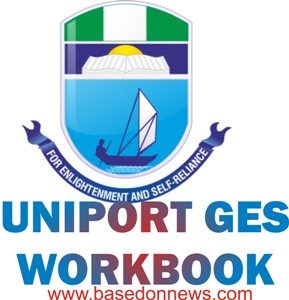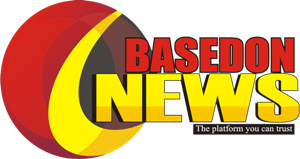UNIPORT GES 104 – Answers to GES 104 – History and Philosophy of Science Workbook Part III

Uniport GES 104 – This post is majorly for all the students that want to fill UNIPORT GES 104 – History and Philosophy of Science Workbook. This article will help you to confirm the answers you wish to select or you’ve selected. Also, guidelines on how you will write your GES 104 exams and possible questions you will see are also stated. GES 104 has been initiated as a compulsory course by NUC to all departments in the University of Port Harcourt and even to other schools at large. It is a course where you are been taught the History and Philosophy of Science. This is where students who may not major in Science are opportune to have knowledge of it. It is indeed a cultural heritage. Uniport does not play with GES courses as it is very compulsory that all students must pass it before graduating from the University.
Many have failed the course just because they were not informed or they were not updated with the right information. Always visit the site, www.basedonnews.com to get updates and similar questions that would come out in your exam. We have been doing it; that is helping students with the right information. We still believe we can.
As we promise to always keep you updated with tips on how to be successful in your academics, latest scholarships, assignments, current questions, and questions you are likely to see in your exams. To be always updated with recent information and get it directly to your phone, kindly subscribe to us using your Email address. Subscription is totally free. You can also Like our Facebook Page and Follow us on Twitter to always get updates in your phone via social media.
FOR GES 103 PART I – CLICK HERE
FOR GES 104 PART I – CLICK HERE
FOR GES 104 PART II – CLICK HERE
This GES 104 Part III is typically done to assist students in answering the questions from Question 71 to Question 100. If you’ve answered yours and want to confirm if what you’ve done is correct, you can easily check the answers below. If you’ve not answered any, you can still use this as a guideline to answer yours. But in all, we advise you read the Textbook so that you can confirm the answers provided.
Answers to 100 GES 104 Questions
- Which of these is chemically inactive _____ Answer: (c) xenon
- An example of bottom dwelling animals include _____ Answer: (a) snail and crab
- Atmospheric layers include all except _____ Answer: (b) helosphere
- The non-destructive daily motions of waves is called _____ Answer: (c) tides
- The potential geologic hazard that may result from sudden slippage along a fault zone in response to stress is called _____ Answer: (d) earthquake
- Which hypothesis suggests that the material that later formed the sun and the planets was originally a disc shaped rotating nebula or cloud of hot gas _____ Answer: (b) Nebula hypothesis
- The earth is made up of the following layers except _____ Answer: (a) Mohorovicic discontinuity
- Our planet has just one satellite called _____ Answer: (b) moon
- A galaxy among hundreds of billions of other galaxies which constitute the universe is called _____ Answer: (c) milky way galaxy
- Which vitamin helps to maintain normal conditional reflex and thus ensures good mental health _____ Answer: (a) Vitamin B5
- The systematic search for solutions to problems is called _____ Answer: (a) science
- The most abundant food molecule for most organisms and basic building block or precursor in most abundant polysaccharides is _____ Answer: (a) pentoses
- Raffinose is made up of the following _____ Answer: (a) Glucose, galactose and fructose
- The basic proteins containing high amount of basic amino acids such as arginine and lysine and are usually combined with nucleic acid in the cells of many organisms to form nucleoproteins are called _____ Answer: (b) Globulins
- The animals which feed on animals/flesh are called _____ Answer: (d) carnivores
- The methods of trapping the insects include the following except _____ Answer: (d) liquid feeder gear
- Which organisms depend on other plants or animals for survival _____ Answer: (c) parasitic organisms
- Fat and oils are called _____ Answer: (a) lipids
- Sources of nicotinic acid include all except _____ Answer: (d) flavin-adenine dinucleotide
- Flammable chemicals could be _____ Answer: (a) liquids
- The toxic chemicals that enter the body through the lungs are _____ Answer: (a) gases and vapours
- Who propounded the theory that all matter is made up of atoms _____ Answer: (b) John Dalton
- The founder of mathematics is _____ Answer: (c) Thales of Miletus
- The first of the Greeks to show interest in Biology was _____ Answer: (a) Philosopher Anaximander
- Which theory provided a plausible mechanism and unified explanation for a wide range of seemingly unrelated geological phenomena _____ Answer: (a) continental drift
- Which of these is not a component of the hydrologic cycle _____ Answer: (b) infiltration
- Increase in human population and standard of living will hasten the depletion of the following except _____ Answer: (d) rock units
- Dates used for historical references are designated as AD or BC. BCE therefore stands for _____ Answer: (a) Before Christian Era
- The decay which occurs when a neutron in the nucleus spontaneously turns into _____ Answer: (b) beta decay
- Radioactivity was discovered in 1896 by _____ Answer: (d) Friedrich Carson
If what we are doing is really Okay by you, please comment below.
TO GET THE REMAINING PART OF THE GES WORKBOOK, CLICK HERE
For possible questions you will see in your Exam Call Click Here
We advise you read the Textbook as Exam questions will come out from the Textbook as well as the workbook.
Are you having any challenge in any course?
Do you have any question that is bothering you?
Are you in need of scholarship for financial release?
Kindly comment below for assistance.
Also communicate WITH US if there is any problem.

Excellent. Very helpful in studies
Thank you so much for taking out time to do this.